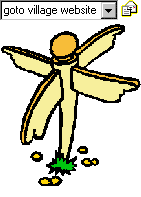
|
Local SpeciesConducted by Mrs J Tuchener May & July 1993
|
| Proper name | Common name | |
| F | Anthriscus sylv. | Cow Parsley |
| F | Cerastium arven | Field Mouse-ear |
| F | Convolvulus arv. | Field Bindweed |
| F | Galium aparine | Cleavers |
| F | Galium verum | Lady's Bedstraw |
| F | Geranium pusillium | Small-flowered Crane's-bill |
| F | Glechome heder | Ground-ivy |
| F | Lamium album | White Dead-nettle |
| F | Lotus corniculat | Common Bird's-foot Trefoil |
| F | Myosotis ramosis | Early Forget-me-not |
| F | Pimpinella saxifr. | Burnet-saxifrage |
| F | Plantago lanceol | Ribwort Plantain |
| F | Plantago media | Hoary Plantain |
| F | Ranunculus bulb | Bulbous Buttercup |
| F | Ranunculus repens | Creeping Buttercup |
| F | Rumex acetosa | Common Sorrel |
| F | Rumex acetosella | Sheep's Sorrel |
| F | Sanguisorba min. | Great Burnet (Salad) |
| F | Saxifraga granul | Meadow Saxifrage |
| F | Senecio jacobea | Common Ragwort |
| F | Silene latifolia | |
| F | Stellaria media | Common Chickweed |
| F | Taraxacum sp. | Dandelion |
| F | Trifolium camp. | Hop Trefoil |
| F | Urtica dioica | Common Nettle |
| O | Achillea mill | Yarrow |
| O | Arenaria serpyll | Thyme-lvd. Sandwort |
| O | Cirsium arvense | Creeping Thistle |
| O | Geranium molle | Dove's-foot, Crane's-bill |
| O | Linaria vulgaris | Common Toadflax |
| O | Paparer dubium | |
| O | Salvia verbanaca | Common Clary |
| O | Saxifraga tridact | Rue leaved Saxifrage |
| O | Silene vulgaris | Bladder Campion |
| O | Sonchus asper | Smooth Sow-thistle |
| O | Trifilium repens | White Clover |
| O | Veronica arvensis | Wall Speedwell |
| O | Veronica cham. | Germander Speedwell |
| O | Veronica hederifolia | Ivy-leaved speedwell |
| O | Veronica serpyll | Thyme-leaved Speedwell |
| O | Vivia sativa | Common Vetch |
| R | Bellis perennis | Daisy |
| R | Cirsium vulgare | Spear thistle |
| R | Digitalis purp. | Foxglove |
| R | Euphorbia sp. | |
| R | Galium mollugo | Hedge-bedstraw |
| R | Geranium dissec. | Cut-leaved Crane's-bill |
| R | Lamium purpureum | |
| R | Ornithogalum umbellatum | |
| R | Rumex obtusifol | Broard leaved Dock |
| R | Sonchus asper | Prickly Sow-thistle |
The above species have been found in our churchyard and because of the nature of management, i.e. no herbicides or pesticides applied, probably still exist today. The best time to view the flora is in May /June when the area is a mass of yellow and white flowers with occasional splashes of blue and pink. In recent years the grass has been left uncut during this time to allow and encourage the plants to flourish and seed.
| see also Natural History and Nature Reserve |
|
A Forest Heath District Council (Suffolk) Project supported by the Heritage Lottery Fund as part of the Millennium Festival ©2000 Designed by ArtAtac |